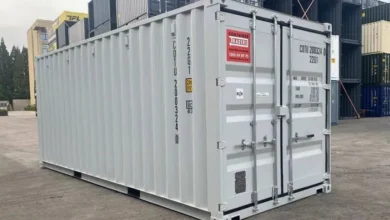
Illuminating Efficiency: How Led Warehouse Lights Revolutionize Lighting Solutions?
Efficiency is crucial in the hectic field of warehousing and logistics. Every aspect of operations, from inventory management to order fulfillment, relies heavily on streamlined processes and optimized resources. In this context, lighting plays a crucial role, providing visibility, safety, and productivity. Traditional lighting solutions have served warehouses for decades, but with the advent of LED technology, a revolution in lighting efficiency has taken place. Let’s delve into how LED warehouse lights are transforming lighting solutions in the industrial sector.
1. Energy Efficiency
One of the main advantages of LED warehouse lighting is its energy economy. LED lights produce illumination levels that are on par with or even higher than traditional lighting options like fluorescent or incandescent bulbs, yet they consume a lot less energy. This translates into substantial cost savings for warehouse operators, especially for facilities that operate 24/7.
Among the many ways that LED lights are more energy-efficient than traditional bulbs is that they are able to turn a greater proportion of energy into light instead of heat. Additionally, LED technology allows for precise control over brightness levels and zoning, enabling warehouses to tailor lighting to specific areas or tasks, further optimizing energy usage.
2. Longevity And Durability
Another standout feature of LED warehouse lights is their exceptional longevity and durability. Traditional bulbs have a limited lifespan and are prone to frequent burnouts, necessitating frequent replacements and maintenance, which can disrupt warehouse operations and incur additional costs.
LED lights, on the other hand, have an impressively long lifespan, often lasting tens of thousands of hours before needing replacement. This not only reduces maintenance requirements but also minimizes downtime and associated productivity losses. Furthermore, LED lights are built to withstand harsh industrial environments, including temperature fluctuations, vibrations, and humidity, ensuring reliable performance in demanding warehouse settings.
3. Improved Visibility And Safety
Visibility is paramount in warehouse environments, where accurate picking, packing, and shipping rely on clear visibility of products and signage. LED warehouse lights provide superior illumination quality, with a bright, uniform light distribution that minimizes shadows and dark spots. This enhances visibility throughout the warehouse, reducing the risk of errors, accidents, and workplace injuries.
Moreover, LED lights offer instant-on capabilities, eliminating the need for warm-up time required by traditional lighting sources. This instantaneous illumination ensures that workers have optimal visibility from the moment they enter the warehouse, enhancing safety and efficiency, particularly in fast-paced environments where every second counts.
4. Environmental Benefits
In addition to their economic advantages, LED warehouse lights offer significant environmental benefits. LED lighting lowers greenhouse gas emissions and the carbon footprint of warehouse operations by using less energy and lasting longer than conventional bulbs. This is in line with the increasing focus on corporate social responsibility and sustainability, which makes LED lighting a desirable option for companies that care about the environment.
Furthermore, no potentially dangerous materials, such as mercury, which is commonly included in fluorescent light bulbs, are present in light-emitting diode (LED) lights. This eliminates the environmental risks associated with disposal and reduces the need for special handling or recycling procedures, simplifying end-of-life management and waste disposal for warehouse operators.
5. Smart Lighting Solutions
The evolution of LED technology has paved the way for smart lighting solutions that offer unprecedented control, automation, and connectivity. Smart LED warehouse lights can be integrated with sensors, motion detectors, and advanced lighting management systems to optimize energy usage, customize lighting schedules, and respond dynamically to changing environmental conditions.
These smart lighting solutions not only enhance energy efficiency but also provide valuable data insights into warehouse operations. By monitoring lighting usage patterns, occupancy levels, and environmental factors, warehouse managers can identify opportunities for further optimization, improve space utilization, and enhance overall operational efficiency.
6. Flexibility And Customization
LED warehouse lights offer unparalleled flexibility and customization options, allowing warehouse operators to tailor lighting solutions to their specific needs and preferences. Because LED lights are available in so many different sizes, shapes, and combinations, they may be used in a multitude of contexts and applications. This allows them to be highly versatile. Consequently, they are able to be applied in a wide variety of contexts. This is in contrast to traditional lighting fixtures, which are restricted in their design and operation.
Furthermore, LED technology enables advanced lighting control features, such as dimming, color tuning, and programmable lighting scenes. This flexibility allows warehouses to create dynamic lighting environments that adapt to different tasks, workflows, and working conditions. Whether it’s adjusting lighting levels for precision tasks, creating designated zones with different lighting intensities, or implementing color-coded lighting for visual cues, LED warehouse lights provide the versatility needed to optimize productivity and comfort in diverse warehouse settings.
7. Reduced Light Pollution And Glare
Traditional lighting sources often contribute to light pollution and glare, which can have negative impacts on both the environment and human health. Excessive light pollution can disrupt ecosystems, interfere with wildlife behavior, and waste energy unnecessarily. Additionally, glare from bright, unshielded lights can cause discomfort, visual fatigue, and decreased visibility, posing safety risks in warehouse environments.
LED warehouse lights address these issues by producing directional light with minimal spillage and glare. LED fixtures can be designed with precision optics and diffusers to control light distribution and minimize light trespass beyond the intended area. This focused illumination not only reduces light pollution and glare but also enhances visual comfort and clarity for warehouse workers, improving overall productivity and well-being.
Conclusion
In conclusion, LED warehouse lights represent a paradigm shift in lighting solutions for industrial facilities. With their unparalleled energy efficiency, longevity, durability, and quality of illumination, LED lights offer a multitude of benefits that revolutionize the way warehouses are lit. From reducing operational costs and enhancing safety to minimizing environmental impact and enabling smart, connected lighting systems, LED warehouse lights are driving efficiency and innovation in the logistics industry. One outstanding illustration of the revolutionary potential of technology in contemporary warehouse operations is the use of LED lighting, which is becoming increasingly important to businesses as they continue to place an emphasis on efficiency and sustainability.








